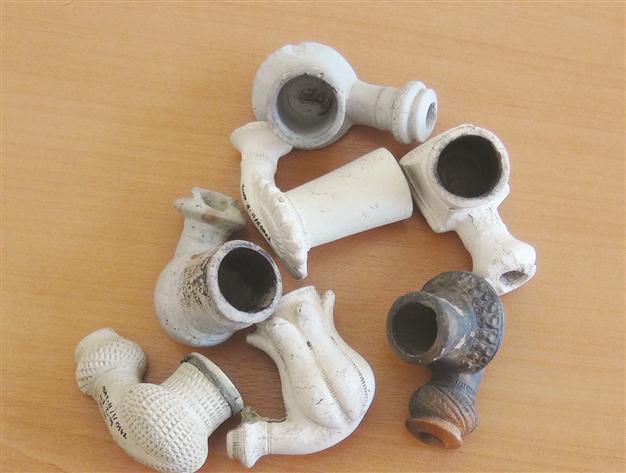Sultans’ tobacco pipes discovered
EDİRNE - Doğan News Agency

DHA photo
Ongoing archaeological excavations at Edirne Palace, one of the Ottoman palaces in the northwestern province of Edirne, have revealed meerschaum tobacco pipes, which date back to the 15th century and after. The pipes are estimated to have been used by the sultans and other top officials of the palace.
The construction of the palace complex, which was the capital of the Ottoman Empire for 92 years, began in 1450 on the island between the two reaches of Tunca River at the time of Sultan Murat II. The palace was extended in the reign of Sultan Mehmet the Conqueror and took the name Sary-ı Cedid. With renovations and extensions by Kanuni Sultan Süleyman and Mehmet IV, the palace became a magnificent one with 117 rooms, 18 baths, 18 small mosques and other parts.
The palace served as an armory from 19th century but Russian occupation in 1878 caused the destruction of the palace. It was set on fire on Jan. 18, 1878 with the order of Edirne Mayor Cemil Pasa in order to prevent the Russian army from seizing the armory. After the three-day fire, only a few sections of the palace survived.
The head of the excavations and Bahçeşehir University member Associate Professor Mustafa Özer said that excavations had been continuing with a 70-person team, adding, “During this year’s works, objects such as ceramics, meerschaum, coins, and glass were found. Also among the findings, kitchen tools and many meerschaum tobacco pipes draw attention. We estimate that these pipes were used by top officials of the palace and sultans. They date back to the end of 15th century and 19th century. There are many findings belonging to Sultan Mehmet the Conqueror, Kanuni Sultan Süleymad and Mehme IV.”
